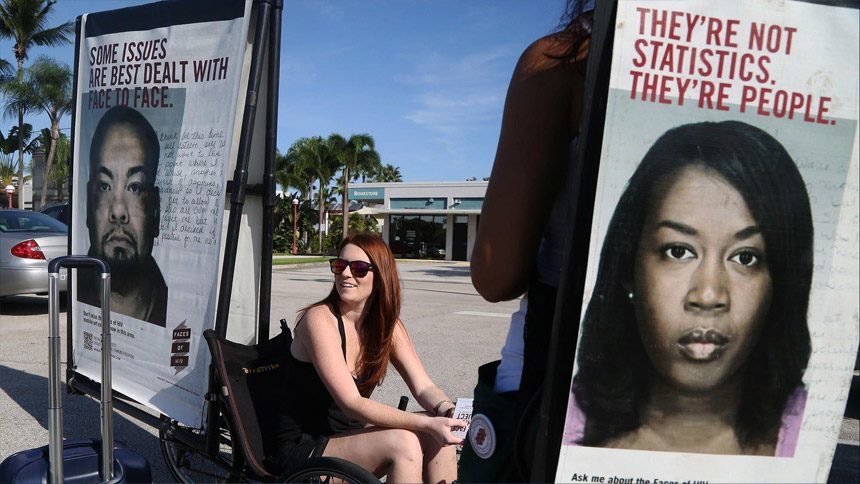South Florida has long been known as a high-risk area for HIV, with Miami and Fort Lauderdale leading the country in new HIV infection rates.
But why has HIV spread so rampantly across South Florida compared to other parts of the country?
Here are five factors that may be playing into the region’s HIV crisis, according to South Florida medical professionals and advocates.
TOURISM
South Florida is a popular destination for tourists and has been known as a party playground for the young and old. While on vacation and having fun, people may lower their guard sexually and be less inhibited.
“People often leave their healthy habits at home when they travel,” said Dr. Stephen Fallon, executive director of Latinos Salud, a Wilton Manors-based non-profit group that raises awareness about HIV prevention and treatment for gay Latino men. “People may overindulge in the cruise ship buffet, have a few too many at the popular nightclub and, yes, put fantasy ahead of clear-eyed choices in the bedroom. But the tourist piece probably isn’t driving our epidemic as much as other factors.”
TRANSPLANTS / NEW RESIDENTS
Florida also has strong in-migration from other states, as well as from outside the country, where people may not have the same level of education on sex and public health. The warm-weather climate and active social life are very attractive to those coming who may not know their status.
“We have so much HIV here in South Florida that the odds are that much higher a partner would have HIV,” Fallon said. “And, much more critically, we have so many people living with HIV who are either not in care, or not taking their medicines as prescribed.”
“Some are coming in already HIV-positive but did not know their status. Others are aware of their status but fail to reveal,’’ said Claudette Grant, director of clinical services for Broward Health Community Health Services in Fort Lauderdale. “We have increased HIV testing in our state and more so in Broward and Miami because we are discovering more people who have never been tested but are HIV positive.”
DRUG USE
The recent resurgence in crystal methamphetamine and opioid use may also lead to new HIV infections.
“There may be collateral effects of increased substance use,” said Fallon. “And there may be ‘condom fatigue’ with gay men who had long used condoms perceiving their risks as very low, or their satisfaction as very low.”
“Use of drugs requiring needles has also increased because of the opioid crisis in Broward and Dade counties,” said Trudy Love, coordinator of the Early Intervention Prevention at Broward Health Community Health Services.
A TREATABLE DISEASE
Because of advances in antiretroviral drugs, HIV isn’t seen the death sentence as it was in the 1980s and 1990s. Seeing men and women who are HIV positive looking healthy and in shape and managing the disease may cause others to lower their guard when it comes to practicing safe sex.
“Some people have been around others who are infected for so long that they realize the disease is chronic and not the death sentence it was in the ’80s, so they have lost the fear of getting infected,” Grant said. “We have had patients actually express relief when they finally become HIV positive.”
Maria Mejia is an HIV advocate for women and Latinos in the region.
“They do see us living longer but they don’t know what us long-term survivors go through,” said Mejia, a Sunrise resident who was first diagnosed as HIV positive 30 years ago.
She uses social media to educate others about the disease and the importance of testing.
“If a person knows their status, even if you are in a monogamous relationship, you should get tested every year,” Mejia said.
CULTURAL BARRIERS
People of some cultures still grapple with fears, misconceptions and stigma about the disease and are less likely to discuss it, experts say. Instead of openly talking about sex with relatives, they don’t, which may cause misinformation to be passed down about safe sex practices and getting tested.
“South Florida is predominantly very diverse and there are lot of Latinos that don’t want to talk about sex,” Mejia said. “They don’t even know what HIV is. … It’s lack of information. Ignorance fuels stigma and because of stigma, a lot of people are silent. Because of stigma, a lot of people don’t get tested and get treatment.”
Source: This article was written by Johnny Diaz for the sun-sentinel.com


